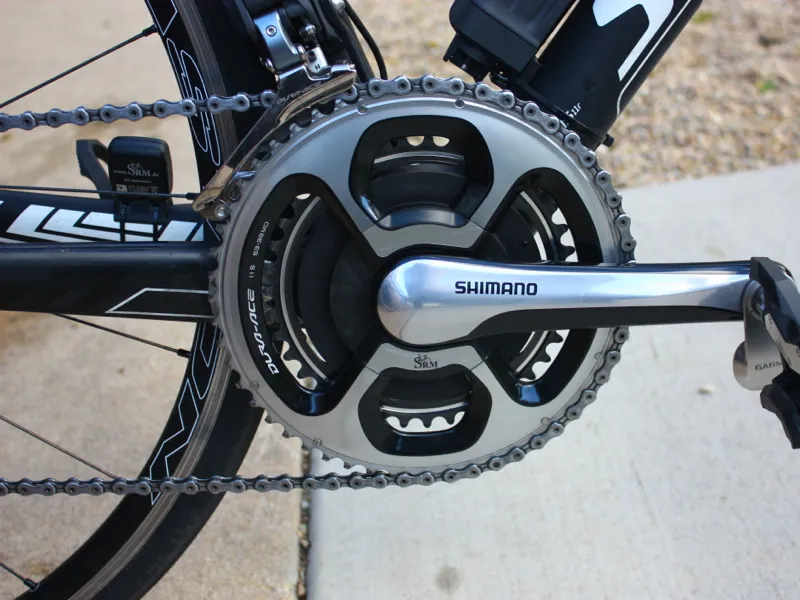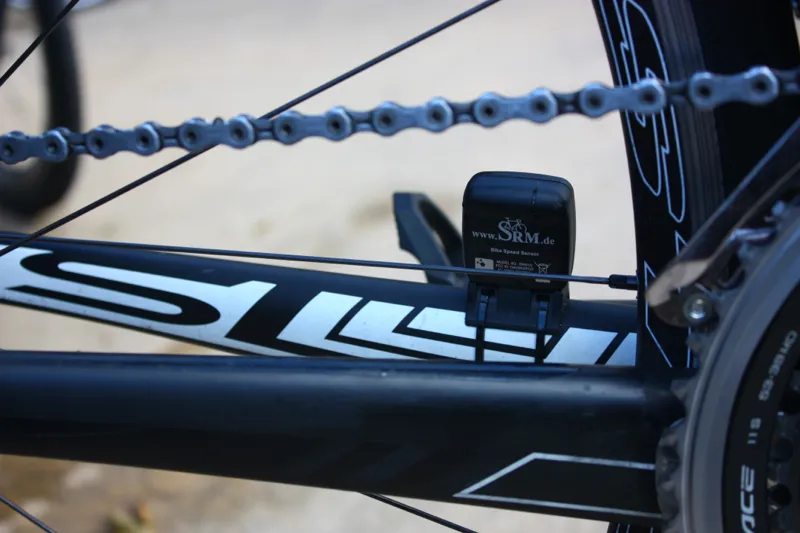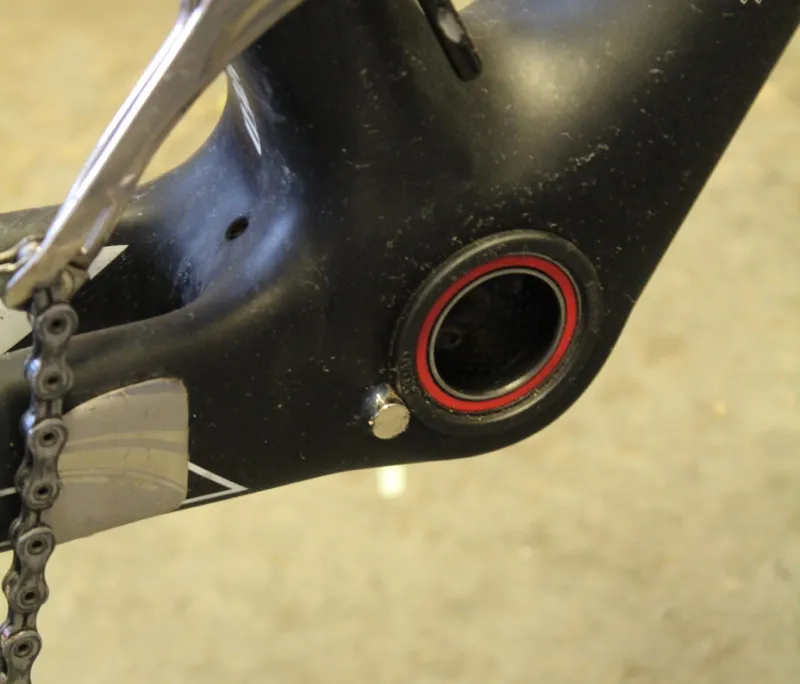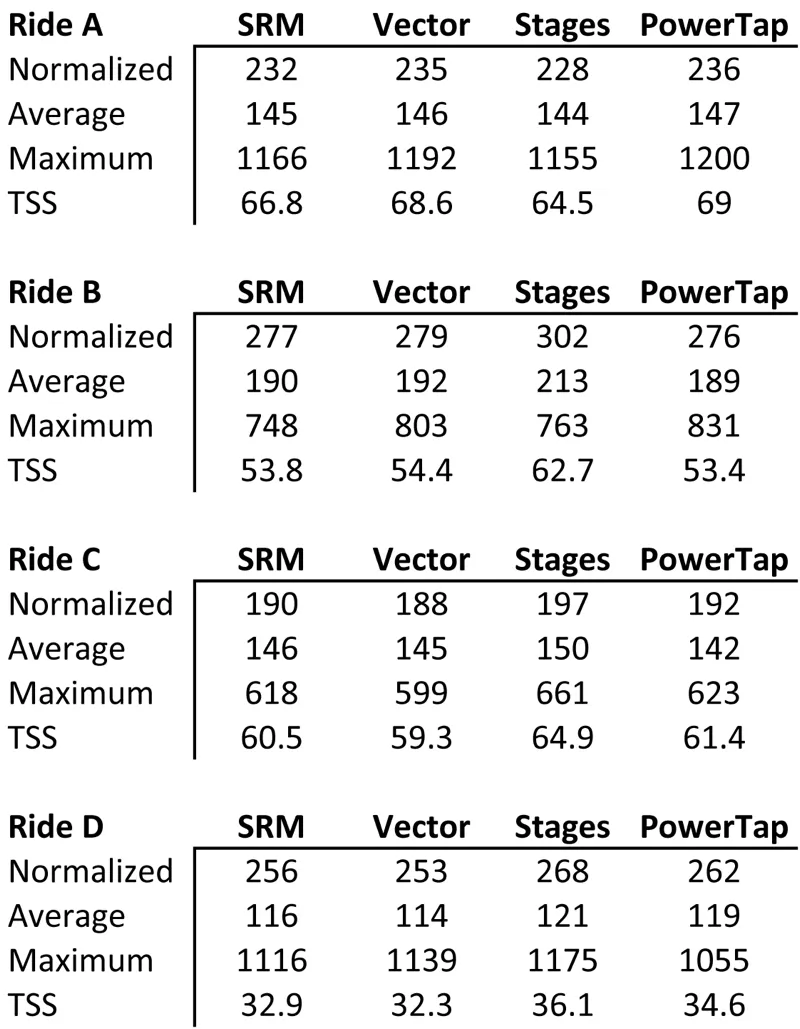SRM founder Ulrich Schoberer is the godfather of cycling power meters, having created his own to use in training decades ago. For the past few years, SRM has been the power meter of choice in the pro peloton, its accuracy and dependability confirmed long ago for many teams.
SRM also produces lab-quality ergometers and other equipment that are used in university studies around the world. With the new PowerMeter Shimano 11-Speed, SRM builds its trusted internals into a crankset with an arm that Shimano makes exclusively for the German company.
We tested the SRM PowerMeter Shimano 11-speed over dozens of rides with both an SRM PowerControl 7 (which reads data at 4x/sec and multiple Garmin Edge 500 computers (1x/sec data capture). Performance was flawless except for one five-minute stretch where interference with the frame-mounted magnet caused cadence (and thus power) to drop to zero. Other than that single situation, the SRM delivered consistent, repeatable power numbers day in and day out, and was unaffected by cold weather, power washings and road grime.
- Highs: Accurate, repeatable power measurement; high level (4x/sec) data delivery; weatherproof integration into custom-made crankset
- Lows: Expensive; no left/right measurement; susceptible to mild ANT+ flaws like all wireless power meters
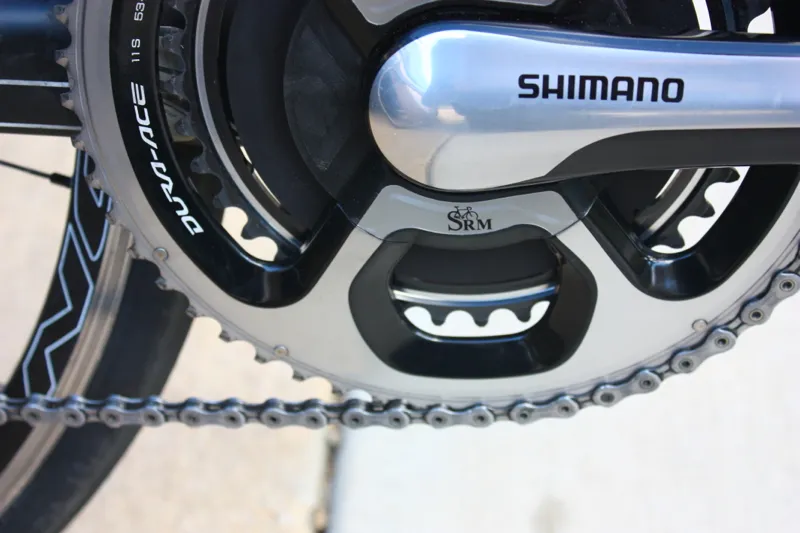
Claimed battery life on the PowerMeter Shimano 11-Speed is 3,000 hours — at which point it must be sent back to SRM for an overhaul
All power meters have their limitations, of course, and the wireless data transmission over ANT+ is a common one. While SRM prides itself on accuracy of measurement, the fact of the matter is that riders can only use data that shows up in their computer. SRM's PowerControl 7 head unit uses ANT+, but with a modified data transmission of four packets per second instead of the standard single packet per second. SRM claims this provides a higher level of detail than you could get on a Garmin.
In our testing, we found that pairing multiple Garmins and a PC 7 to the SRM resulted in slightly different data that can only be attributed to variances in the transmission, that is, the head units didn't 'catch' every single packet sent by the power meter. While total average power would typically be within two watts across the head units, max wattage could vary by more than 100 watts, with even the PC 7 missing some packets. Granted, this level of granular disrepancy (2w) isn't too important in the big picture, but it's worth noting that even the mighty SRM is susceptible to noise.
Schoberer still keeps an active hand in the direction of the company. While the young Schoberer was keen to push the envelope of training technology years ago, now he isn't eager to add on what he sees as unnecessary features to his power measurement system. With its narrow set of features, the Power Control 7, depending on your viewpoint, could be classified as elegantly simple or just primitive. The PC 7 records the basics: power, speed, cadence, heart rate, time. "For serious training, this is all you need," Schoberer told BikeRadar with a shrug. Left/right power measurement, for example, is not necessary in his mind, and is therefore not an option on the SRM.
Nonetheless, SRM remains the dominant standard in power meters. Other power meter companies reference SRM meters, directly or otherwise. As advertised, SRM power meters work well, predictably, reliably and with a high level of accuracy.
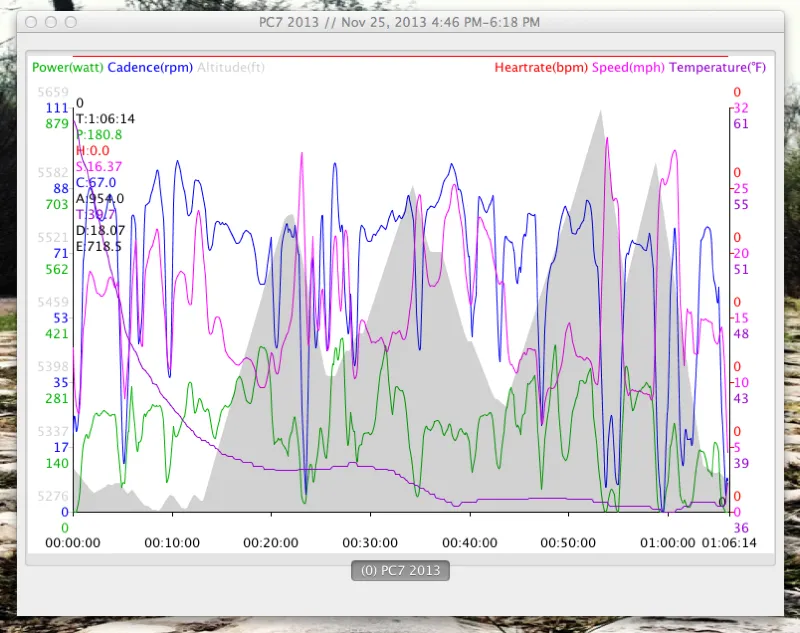
SRM's own software allows for basic analysis, but most riders or their coaches will use something more sophisticated, such as Training Peaks
For this latest model, Shimano produces a custom crank arm and provides the ultra-stiff 9000 chainrings. Aesthetically and mechanically compatible Shimano's 11-speed 9000 mechanical Dura-Ace and Di2 electric groups, the Shimano 11-Speed PowerMeter also works with 10-speed Shimano drivetrains. It comes in standard (53/39), compact (50/34) and semi-compact (52/36) options, in a variety of crank lengths.
The new Shimano crank design allows SRM to put in a bigger battery, with a claimed life of 3,000 hours. On the plus side of SRM's sealed design, it is weather-proof. On the down side, it does mean you have to send the power meter back to SRM when the battery runs out.
The PowerMeter Shimano 11-speed comes with a three-year warranty. If many current SRM customers are any indication, this new unit should last much longer than that.
In-house manufacturing remains a source of pride for the company, and a selling point for some riders. But there is simply no way around the price for non-professional riders. A full system, including the PC 7, heart-rate monitor strap and ANT+ speed sensor runs a cool US$4,045.
- Related: Garmin Vector power meter long-term review
- Related: Stages Dura-Ace 7900 power meter long-term review
- Related: SRAM Red Quarq power meter review
- Related: Pioneer Pedaling System review
BOTTOM LINE
The PowerMeter Shimano 11-Speed is an impeccable power meter that works with both Garmin computers and SRM's own Power Control. While there is no left/right measurement, there is very accurate overall power measurement at four times a second. And boy, is it expensive!
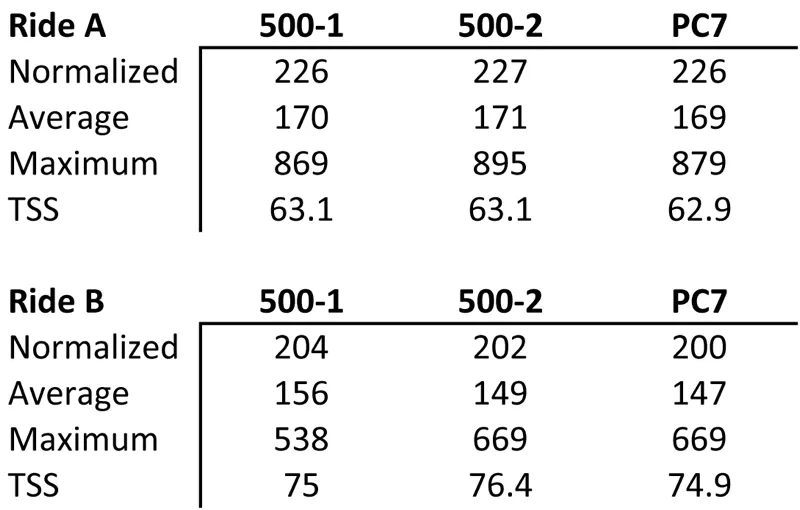
Capturing data via ANT+ isn't always perfect. In the rides above, two Garmin Edge 500s and a Power Control 7 were paired to the PowerMeter Shimano 11-speed. All three were set to average zeros. The Garmins recorded once a second, and the PC 7 captured at four times second
